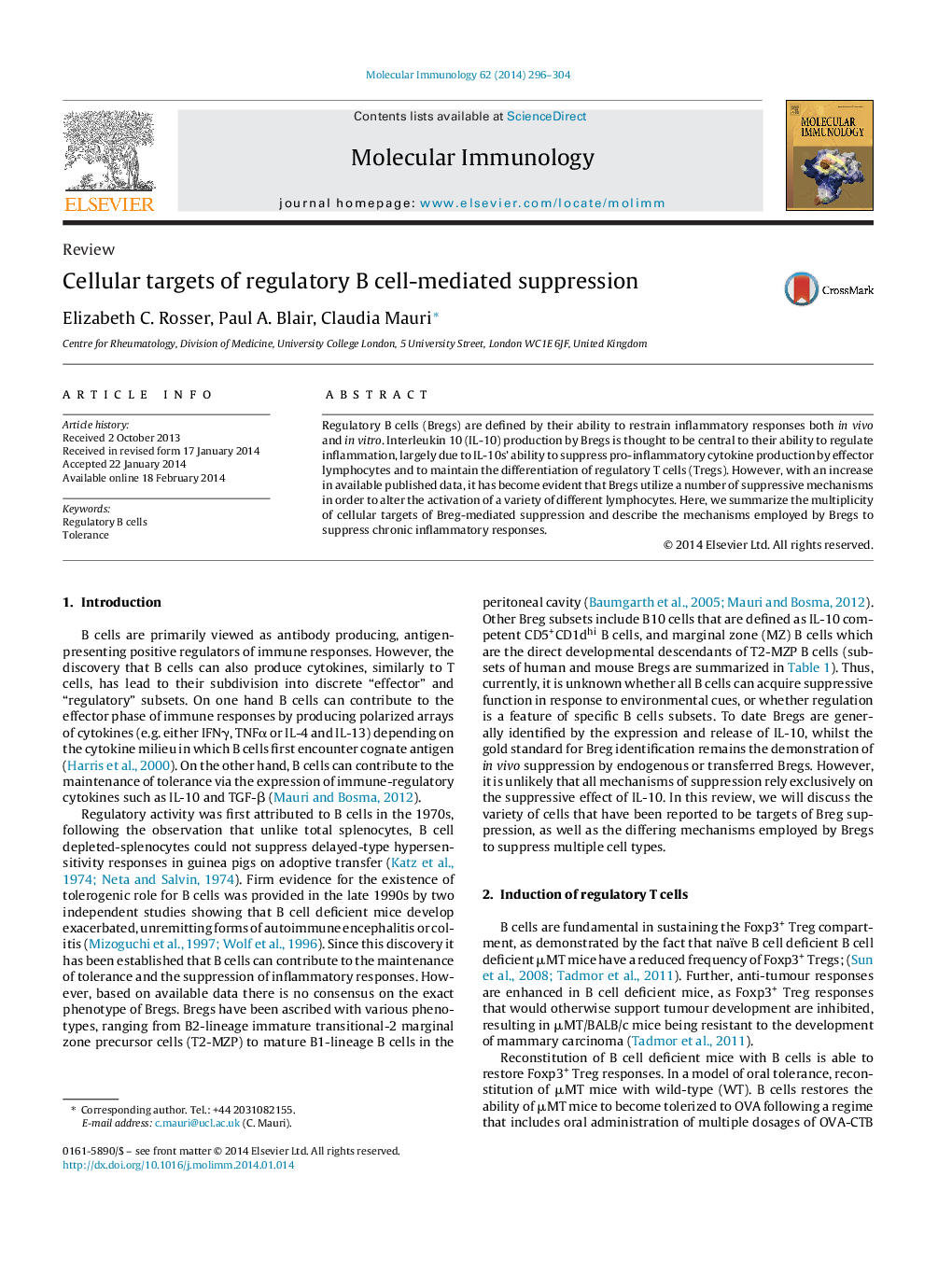| Article ID | Journal | Published Year | Pages | File Type |
|---|---|---|---|---|
| 5916883 | Molecular Immunology | 2014 | 9 Pages |
â¢Regulatory B cells suppress a wide-variety of inflammatory cells.â¢In this review we describe the targets of regulatory B cell-mediated suppression.â¢Suppression by regulatory B cells may be cognate, cell-contact-mediated, bystander or indirect.
Regulatory B cells (Bregs) are defined by their ability to restrain inflammatory responses both in vivo and in vitro. Interleukin 10 (IL-10) production by Bregs is thought to be central to their ability to regulate inflammation, largely due to IL-10s' ability to suppress pro-inflammatory cytokine production by effector lymphocytes and to maintain the differentiation of regulatory T cells (Tregs). However, with an increase in available published data, it has become evident that Bregs utilize a number of suppressive mechanisms in order to alter the activation of a variety of different lymphocytes. Here, we summarize the multiplicity of cellular targets of Breg-mediated suppression and describe the mechanisms employed by Bregs to suppress chronic inflammatory responses.
